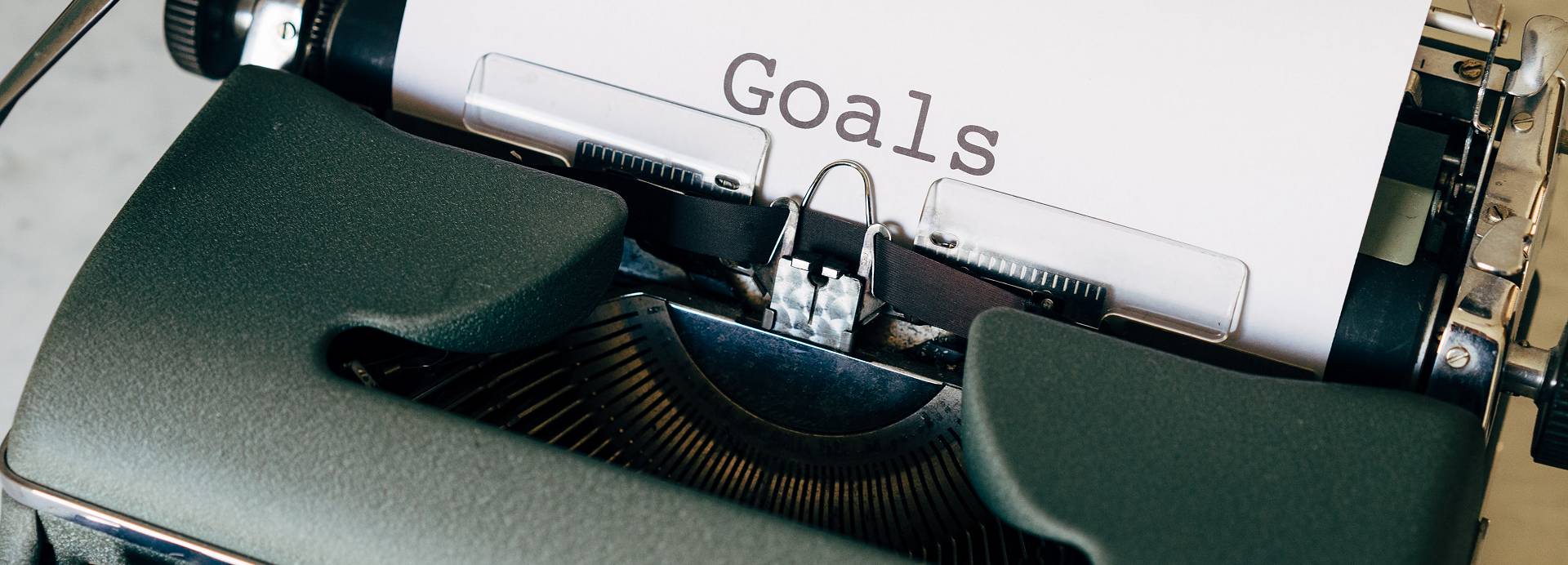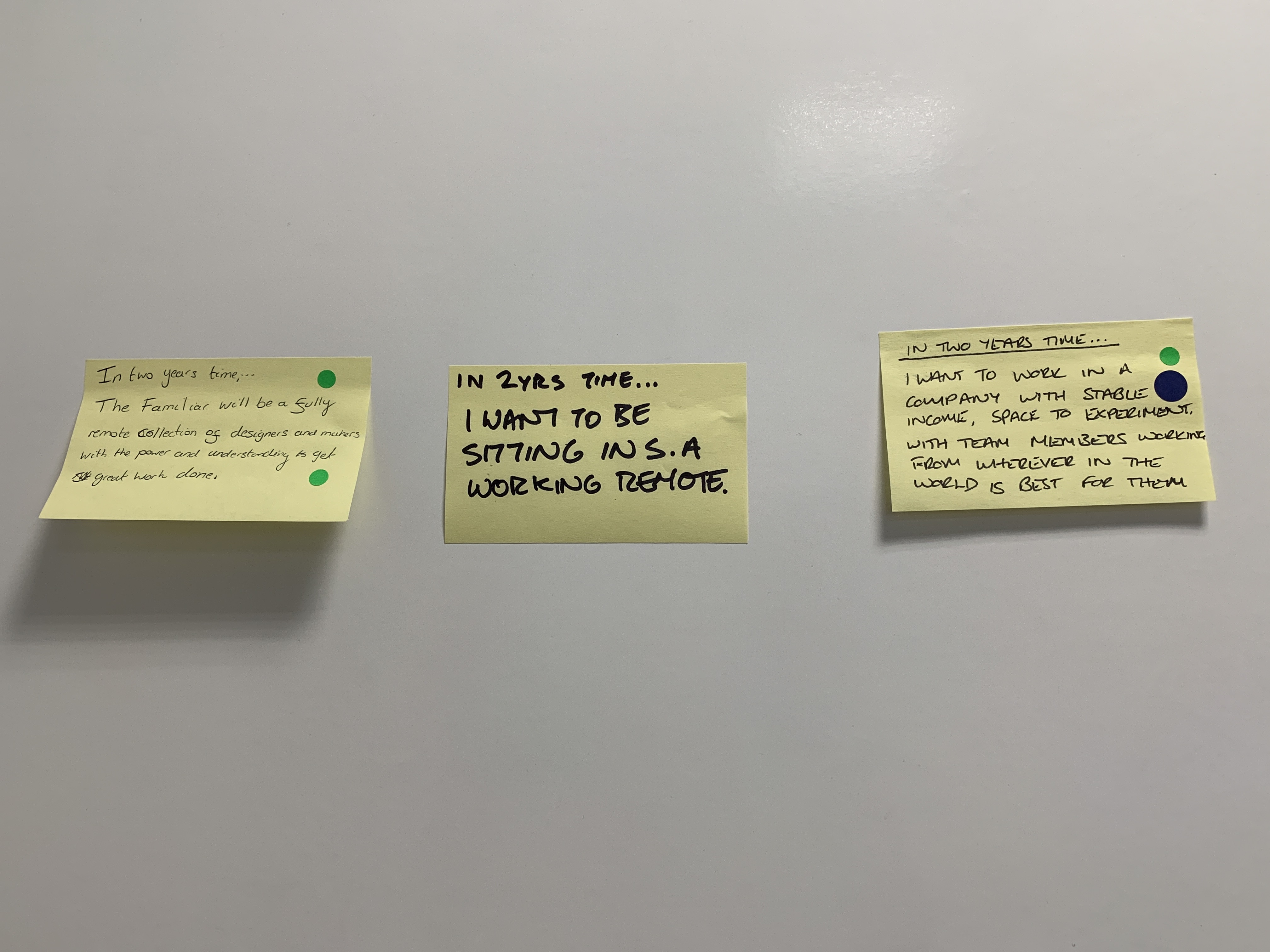
Long-Term Goals - The Design Sprint Unpacked
Sixty Second Summary
In this series of articles, we’re going to take a look at the individual parts which make up a Design Sprint, how each part helps us work towards a user-tested prototype, and how you can use the activity on its own within your business’s Design-led decision making process.
Today’s article is a short but important one, as we take a look at Long-Term Goals, which set the tone and expectations for the entirety of the Design Sprint.
Full Article - 4 Minute Read
An Optimistic Future
The purpose of the Long-Term Goals within the greater structure of the Design Sprint is to set an optimistic goal for the Sprint, looking at what we’d like to achieve over the long term, rather than focussing on just the short term, hence the name.
Setting the Long-Term Goal starts with a group conversation, during which you and the Sprint Team try to come to a common ground on the Long-Term Goal. This may involve some slowing down, which may be frustrating at the beginning of the Sprint, but making sure you take the time to set the Long-Term Goal will keep the rest of the Design Sprint running smoothly, with everyone working towards the common goal.
Start With a Question
To start the Long-Term Goal conversation, it’s good to ask your team this question (as suggested in The Sprint Book):
“Why are we doing this project? Where do we want to be six months, a year, or even five years from now?”
The conversation around this question could take anywhere up to 30 minutes, if your team has different opinions on what the goal should be based on the wicked problem you’ve brought into the Sprint. Sometimes, the conversation may be a very short formality, such as when the team is already aligned on what the Long-Term Goal should be, where this time will be used to just confirm agreement.

Make a Decision
If the Sprint Team finds it difficult to agree on a Long-Term Goal, first remind them of the problem they’ve brought into the Sprint and the question they’re trying to answer. If there is still disagreement, it’s time for the Decider to step in and bring everything together into a Long-Term Goal for the team.
Write It Big
Once a Long-Term Goal has been agreed upon, it’s time to write it large at the top of one of the whiteboards (physical or digital), so that it is always visible to everyone in the Design Sprint Team. If working as a remote team, ask each member of the team to write down the goal and display it in their own space, for example on a post-it at the top of their display, so that it’s always in their field of view.
This Long-Term Goal is your North Star, guiding the Design Sprint Team throughout the Sprint.
What Makes a Good Long-Term Goal
Good Long-Term Goals have the following common characteristics:
- They focus on the longer term, with two years out being a good starting goal
- They are based on the Wicked Problem you brought into the Design Sprint
- They are agreed upon by everyone in the Design Sprint
- They are singular or limited in focus, rather than wide-reaching
- They are optimistic about the future and our potential
- They focus on something that can be affected by Design and the Design Sprint team
Examples of Long-Term Goals
The following are examples of real Long-Term Goals from successful Design Sprints. Feel free to use these as inspiration for how your Long-Term Goals should look and read for your Design Sprints.

Blue Bottle Coffee
When running their Design Sprint with Jake Knapp of Google Ventures, Blue Bottle Coffee had a key vision of where they were headed in the long term and were able to sum up their goal in just a sentence: Bring great coffee to new customers online.
This single sentence, agreed upon by the whole Sprint Team, led the direction for the rest of their one-week Design Sprint.

The Familiar Ltd
When The Familiar Ltd (that’s us!) ran a Design Sprint to help them understand and prototype their next steps, we asked ourselves what we would like to achieve in two years time. We came up with three (the number of people in the Sprint) ideas.
- In two years time, The Familiar will be a fully remote collection of designers and makers with the power and understanding to get great work done.
- In two years time, I want to be sitting in South America working remotely.
- In two years time, I want to work in a company with stable income, space to experiment, with team members working from wherever in the world is best for them.
We then voted on which of the three Long-Term Goals we would like to take forward to be the Sprint’s Long-Term Goal. We continue to work to create a company with stable income, space to experiment, and with team members working from wherever in the world is best for them.
Next Week
Coming next week, we’ll take a look at Sprint Questions and how we come to decide on which ones to answer. Based on a slightly more pessimistic outlook, these questions work with the Sprint Goal to guide us through the rest of the process.
To be notified whenever a new Unpacking The Design Sprint article drops, subscribe to our mailing list or follow us on Twitter and LinkedIn.